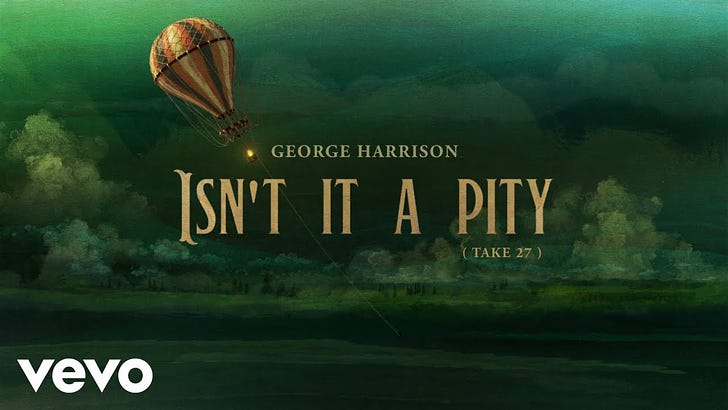Today would have been George Harrison’s 80th birthday. That once sounded old. Now it seems quite young. He and Bob Dylan could still be making music, writing songs, doing pop-up shows as Nelson and Lucky Wilbury, their respective nicknames in the Traveling Wilburys. In the early months of Critical Conditions, I did a long essay about Harrison’s All Things Must Pass: 50th Anniversary Deluxe Edition (Apple/Capitol/UMe), and All Things Must Pass Away: Harrison, Clapton, and Other Assorted Love Songs, by Kenneth Womack and Jason Kruppa (Chicago Review Press). There were only a few hundred subscribers at the time. Now there are more than 1,000. Thanks to all of you who have stayed and joined the ride. This is an edited version of the Substack published Sept. 28, 2021.
A few weeks ago [in summer 2021] I recorded a "Fab 4 Free For All" podcast with my Long Island homeboys Mitch Axelrod, Rob Leonard, and Tony Traguardo. I had met them in fall 2018, at the "The Beatles' The White Album: An Inte…
Keep reading with a 7-day free trial
Subscribe to Critical Conditions by Wayne Robins to keep reading this post and get 7 days of free access to the full post archives.



